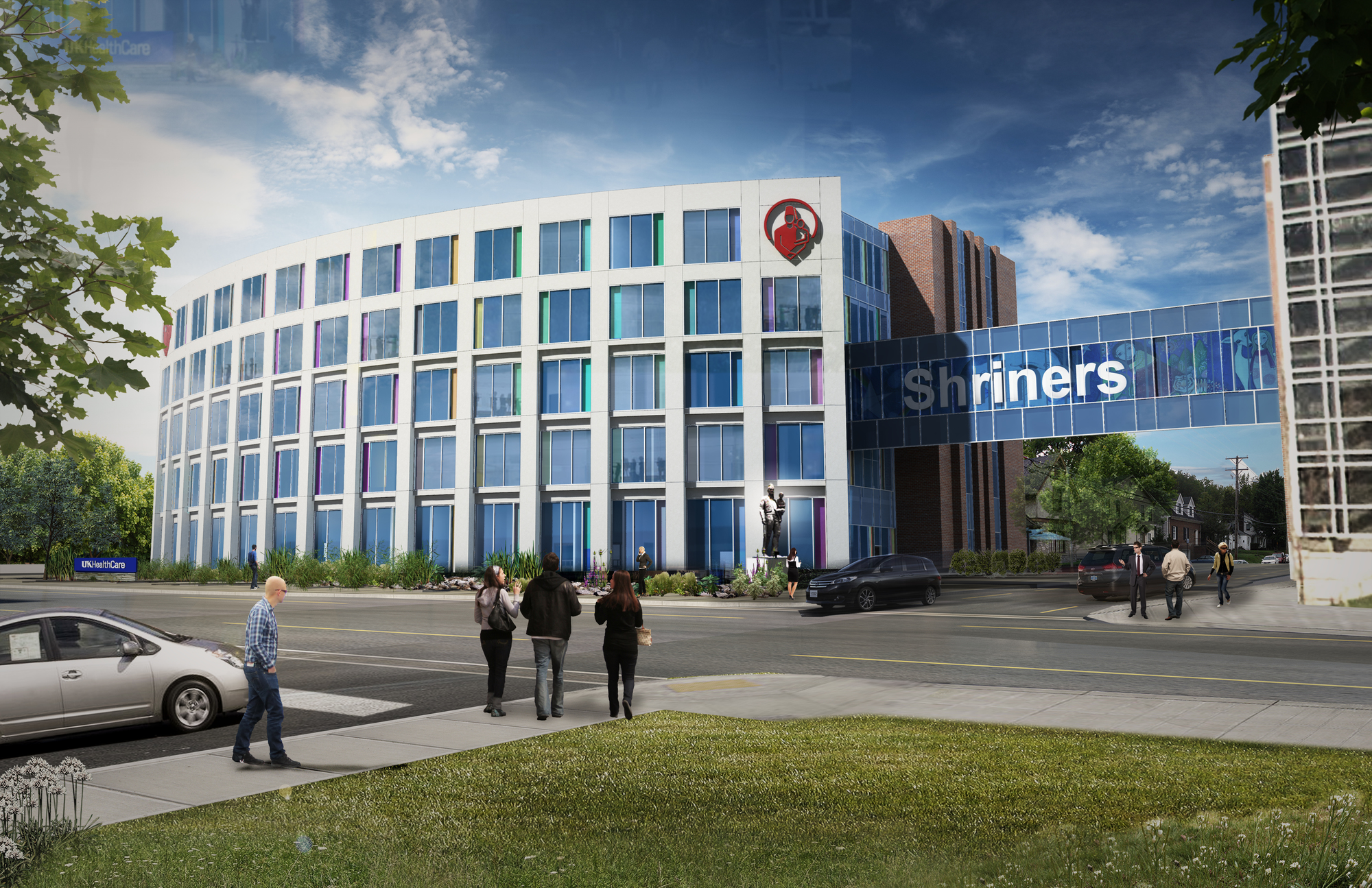
Shriners Hospitals for Children Lexington was the first project I was assigned to when starting at SRG almost 3 years ago. Even after my first visit I could tell that this was going to be one of those clients and projects that would remind me why I wake up every day and do this for a living.
When I traveled to Kentucky to see the client within two weeks of starting at SRG, I was ready to jump head first into the project. However, I was concerned about entering a project mid-stream after they had already participated in a design effort with another SRG designer. I was coming in to wrap up outstanding items, and I wanted to ensure my client would know that the design would be consistent. I was relived to discover this client group could not have been more gracious to my presence and participation on the project. They too were ready to jump in and start discussing the remaining areas of design.

My primary role was to complete the design of the environmental graphics, the furniture package, and eventually manage the construction administration. One of the early client interactions was our on-site review of the headwall design. On a bitterly freezing day in January, with a high of 14 degrees Fahrenheit, we brought the user group over to our unenclosed construction site to review the headwall mock ups. The user group consisted of the Managing Director for Patient Care Services, the Surgical Nursing Staff Manager, Physicians, the Managing Director for the clinics, the Project Managers from the contractor’s team, and the Director of Design and Construction for Shriners.
We primarily reviewed the headwalls in the surgery suite for the pre-surgery patient prep rooms and the post-surgery patient recovery rooms. In these areas, we needed to locate all the necessary accessories that are associated with patient care on the headwalls: medical gas locations, vital monitors, power and data outlets, light switches, and a computer workstation. The footwalls hold the sharps container, white board, glove dispenser, TV and other accessories. These discussions help to define the care provider zone and family and patient zones in each room. While something as small as a light switch or glove dispenser may seem trivial, the placement of these tools will maximize operational workflow by increasing efficiency and decreasing errors. Even after three hours of reviewing headwalls in the bitter cold we still had users who were giddy, excited, and thankful to be a part of the process. They couldn’t believe that after all those meetings staring at two dimensional plans, the building was beginning to take shape and would soon become a treatment space for their patients. They were so appreciative that we were engaging them and asking for their input and opinions.
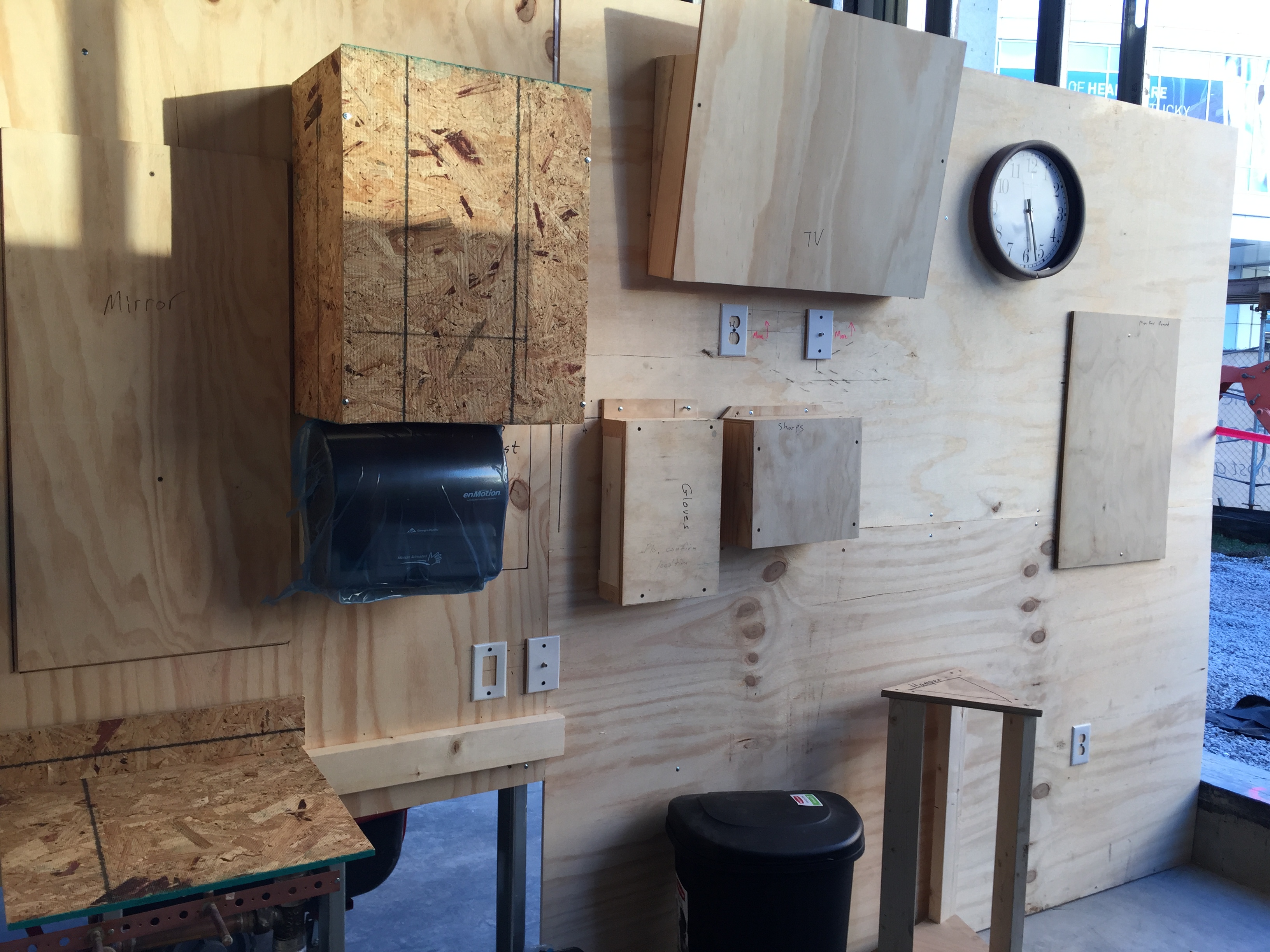
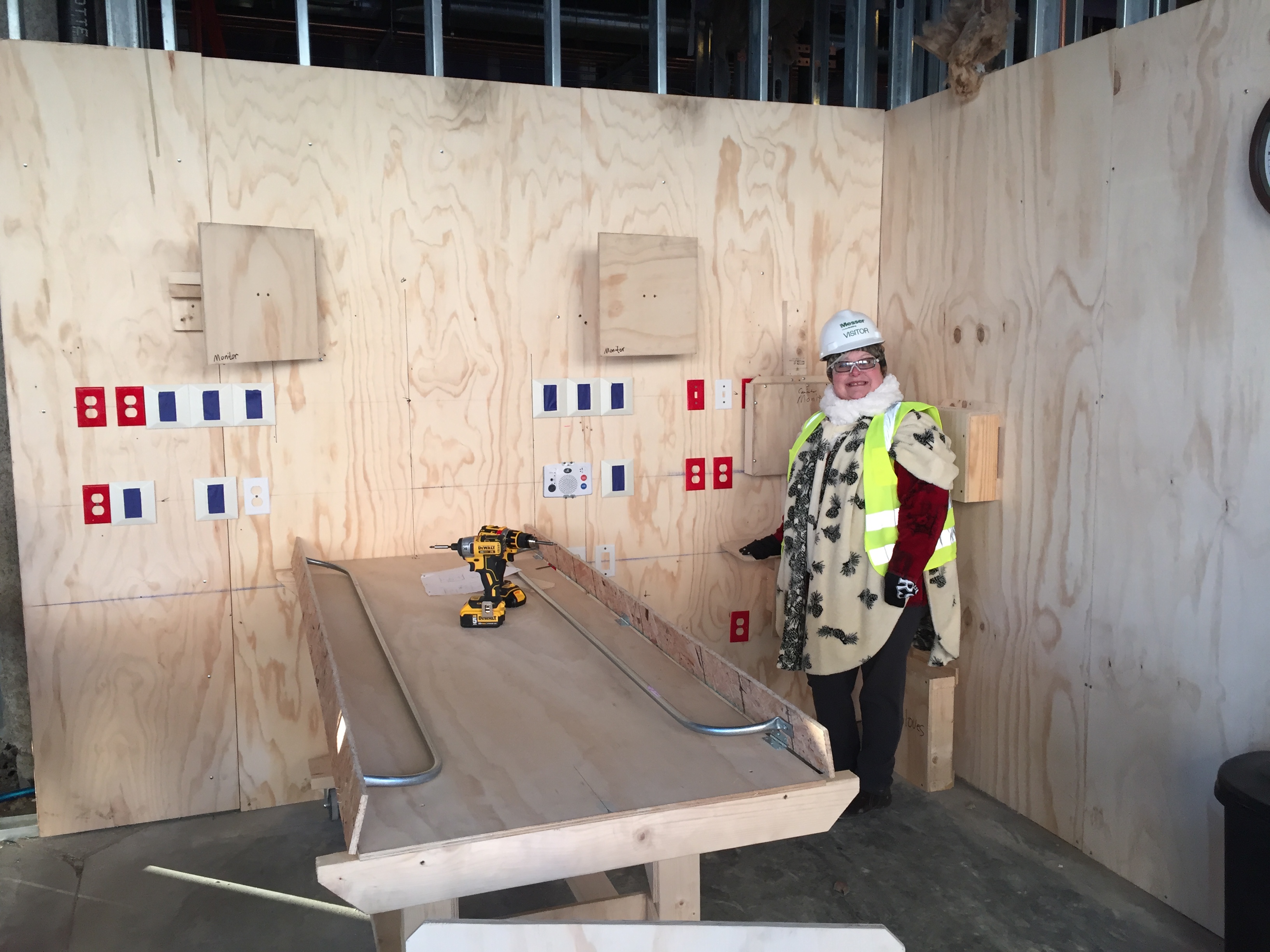
The design process for the environmental graphics had its share of defining moments which changed the direction of the design, but in the end, we developed a design concept that tied back to the history of their existing facility in a way that helped their patients to connect the Shriners identity across the old facility to the new one.
Our primary clinic waiting area defined different treatment corridors by season. Originally, we planned to use icon symbols that tied into the seasons as a wayfinding tool. The existing facility used animals as a form of wayfinding in the clinic: an animal on the door and a custom painted mural of that animal inside the room. After discussions with the users, we learned that the animals were important to their identity, and something they did not want to lose. We worked with DesignTex, a textile company that has an expansive line of graphic printing capabilities for design and manufacturing. Through DesignTex we worked with an artist out of Portland, Maine to develop the custom graphics for the hospital. Together we found a balance of animals and seasonal art for our custom graphics and wayfinding. For example: a patient enters the Winter Corridor, and the staff can tell the patient to look for the Moose Exam Room. This gives the patient autonomy as they explore and engage with their surroundings.
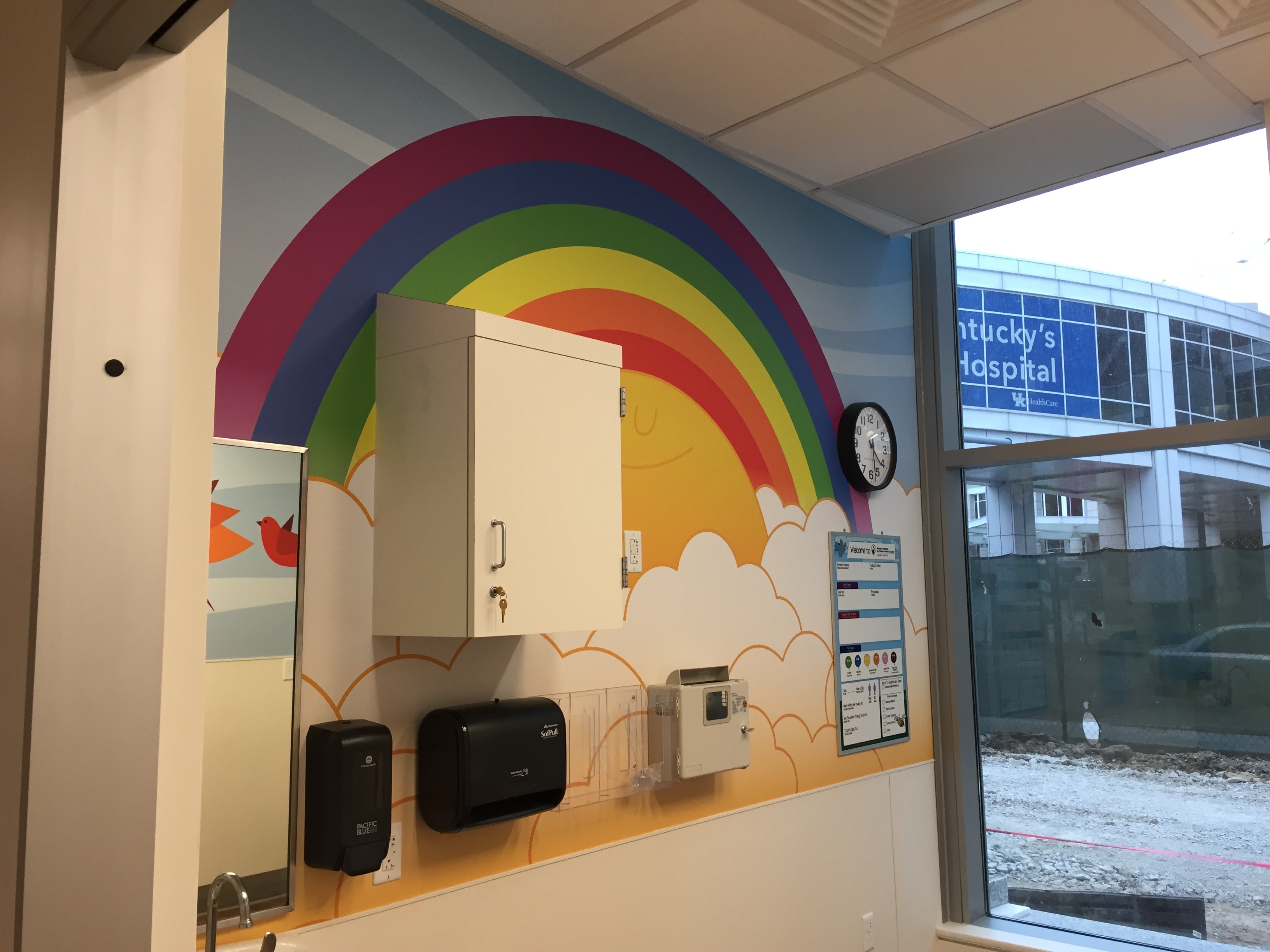
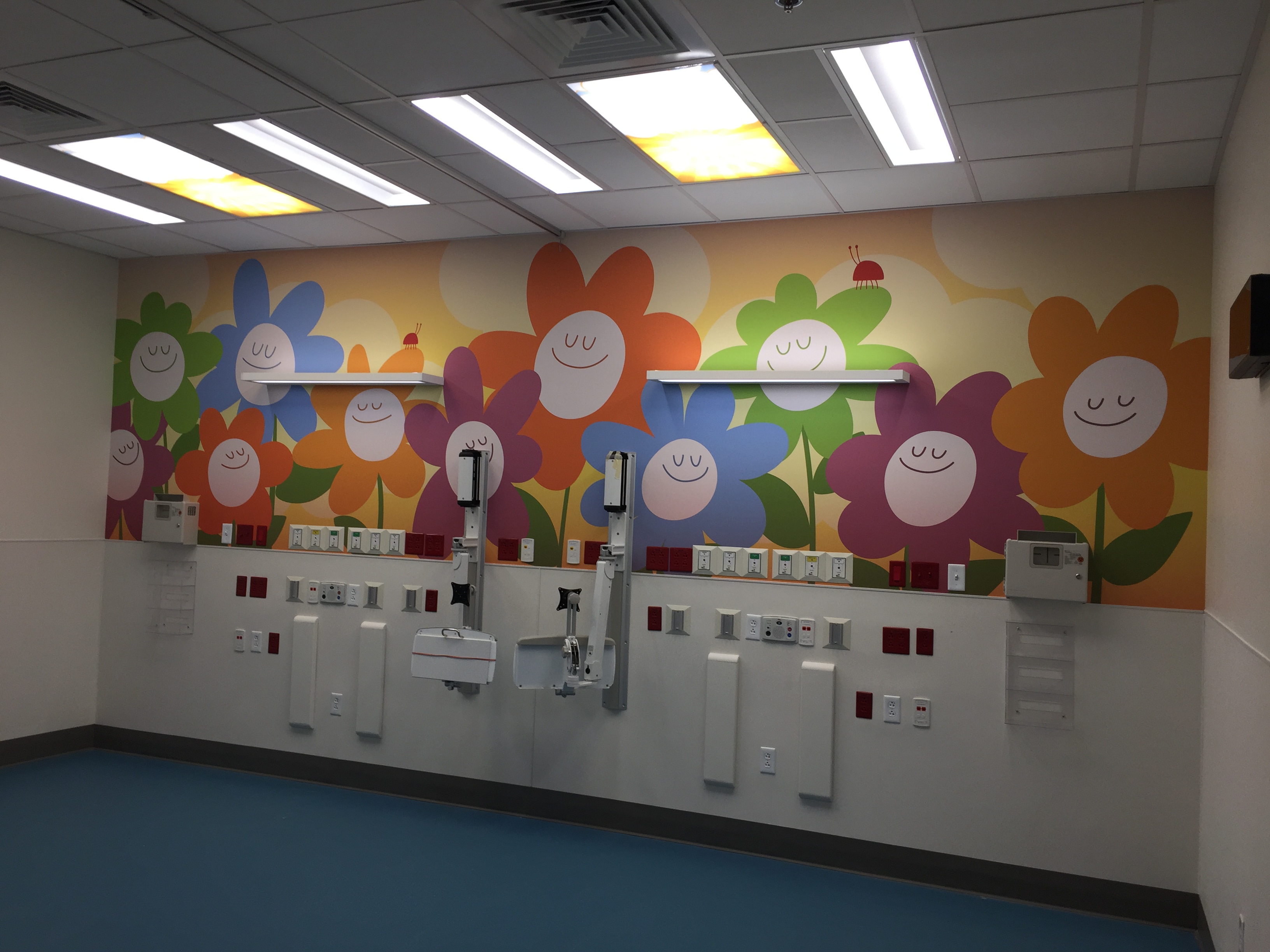
After the graphics were installed, the Director of Patient Care Services approached me for one of the moments as a designer you live for – she gave me a hug and thanked me and SRG for our hard work to create a beautiful building that was beyond their expectations. She expressed gratitude for all the design meetings, for listening to them, and for incorporating their needs into the design. She spoke about how surprised and impressed she was with the final graphic installation, and told me that patients and families take photos with the graphics. As she gave me a second hug, and I fought back tears, I told myself to remember this moment, to never forget why we do what we do. It’s a reminder that bringing the user groups along in the journey and responding to their ideas, gives them pride and an investment in the design.
The interior graphics are just one way the design team integrated positive distraction elements to create a welcoming and comforting environment that appeals to patients, families, and staff members. The use of diachronic glass on the curved façade allows users to engage with the building in a playful way. The glass changes color based on the time of day and the lighting conditions. The glass casts bright hues of pink and yellow into the space, and transitions between shades of green, blue, and purple on the exterior. Locating this design element on the curved façade, allows users to identify with it as they circulate internally in the public spaces and adds a dynamic element to the street view of the facility.
My last day on site reaffirmed my attachment to our clients. The hospital staff was wrapping up their last-minute preparations after two weeks of transition from the old site to the new. Speaking with many of the staff, they expressed how excited they were to see their patients. Two weeks was too long to be away, in fact, they were tired of being around only adults! It’s been inspiring to work with people whose mission, to treat children, is so central to their daily lives. The Shriners community, and this project, have left a mark on my career that I will never forget.

